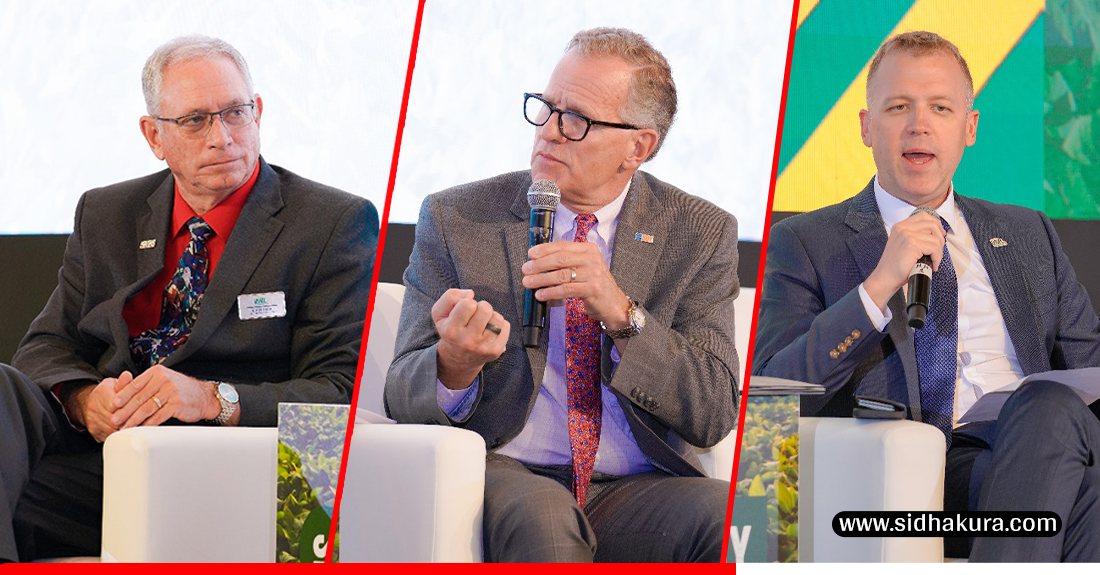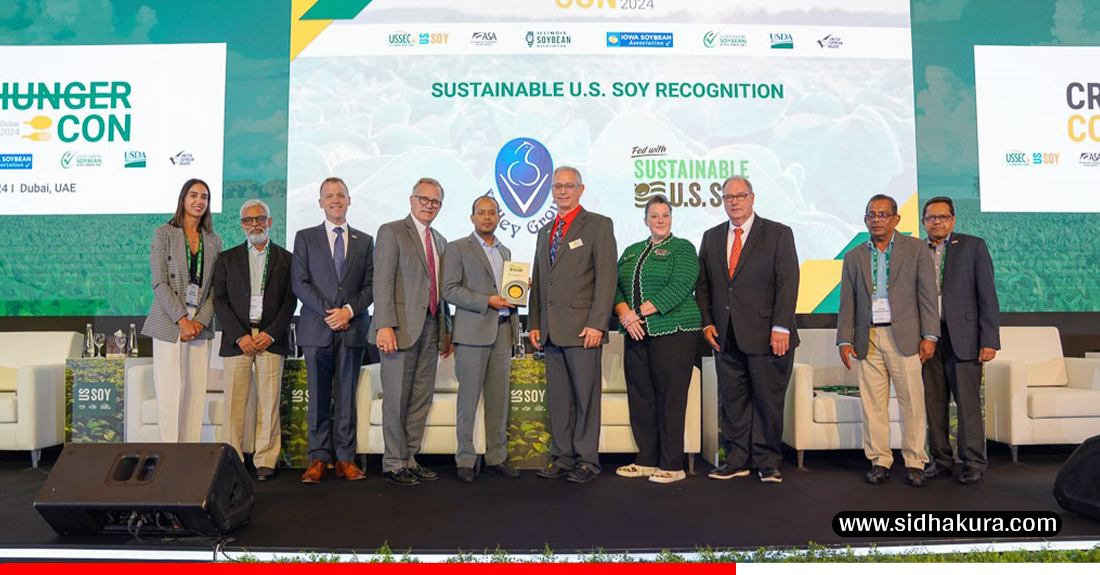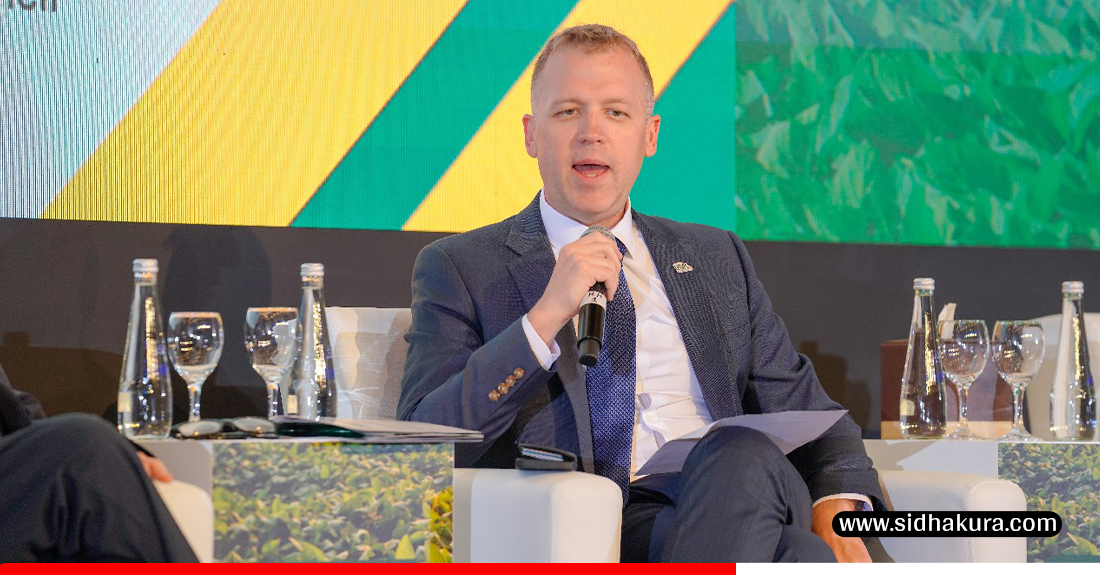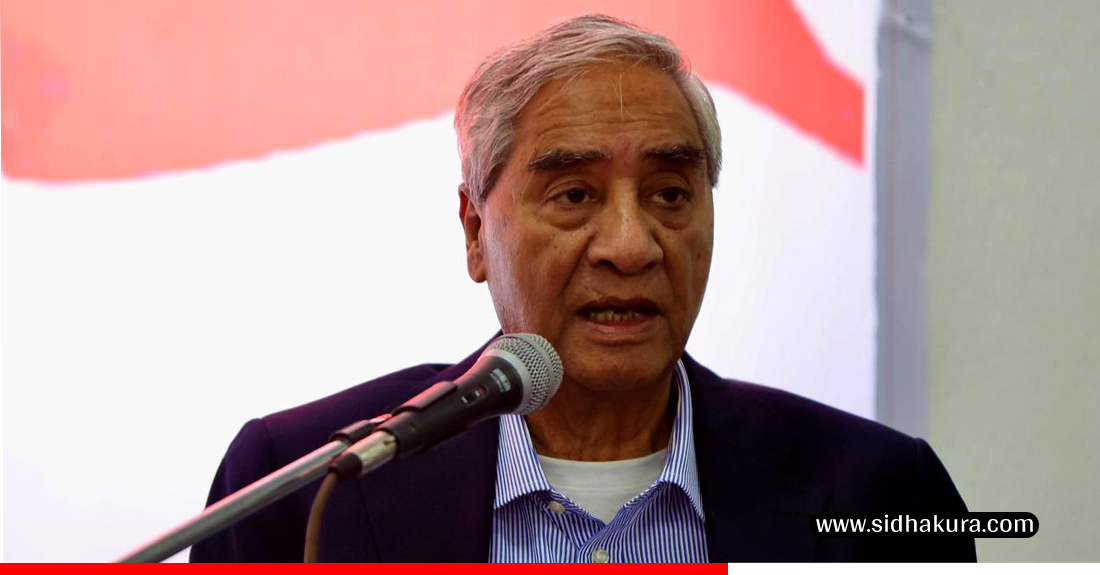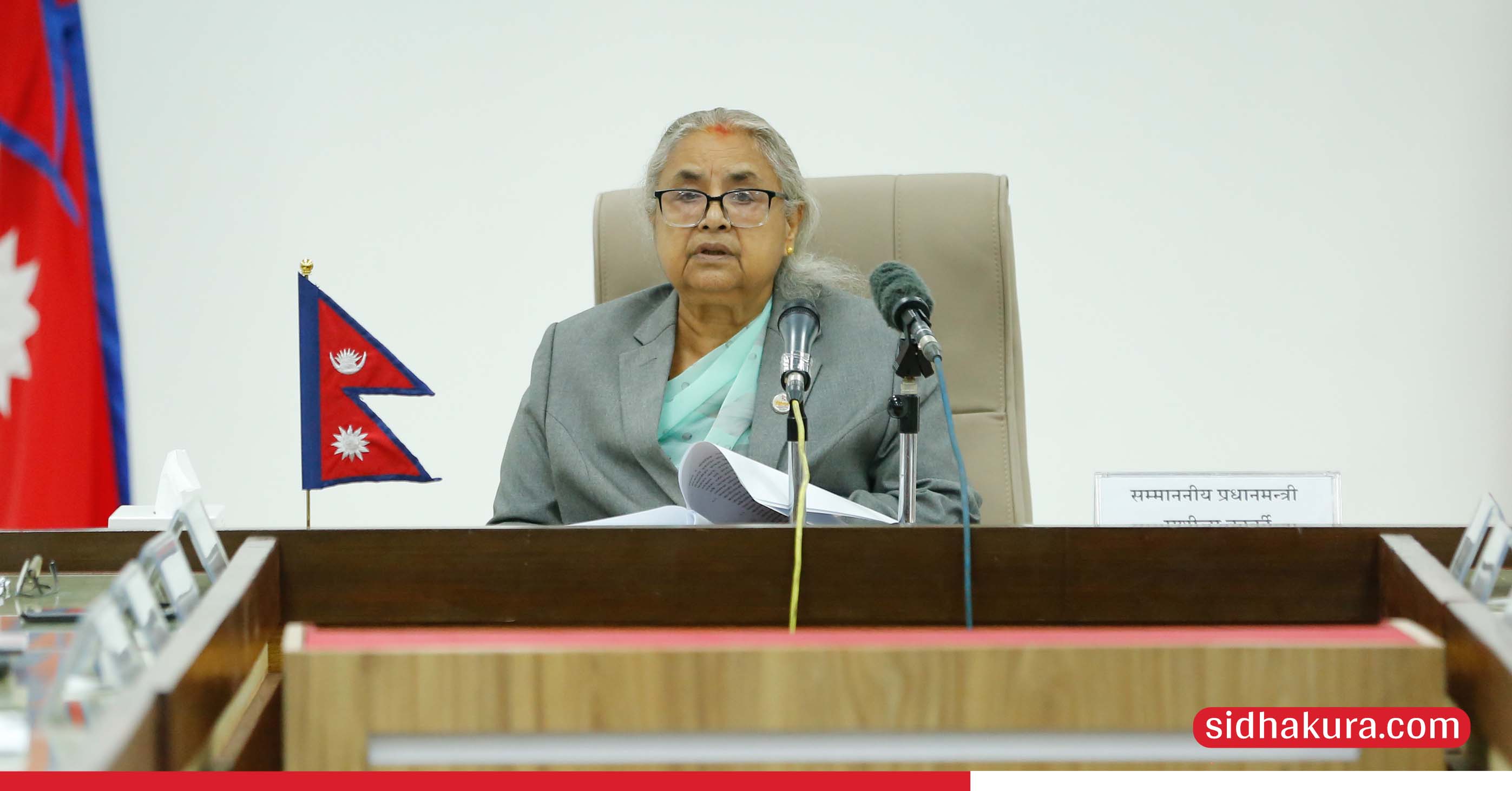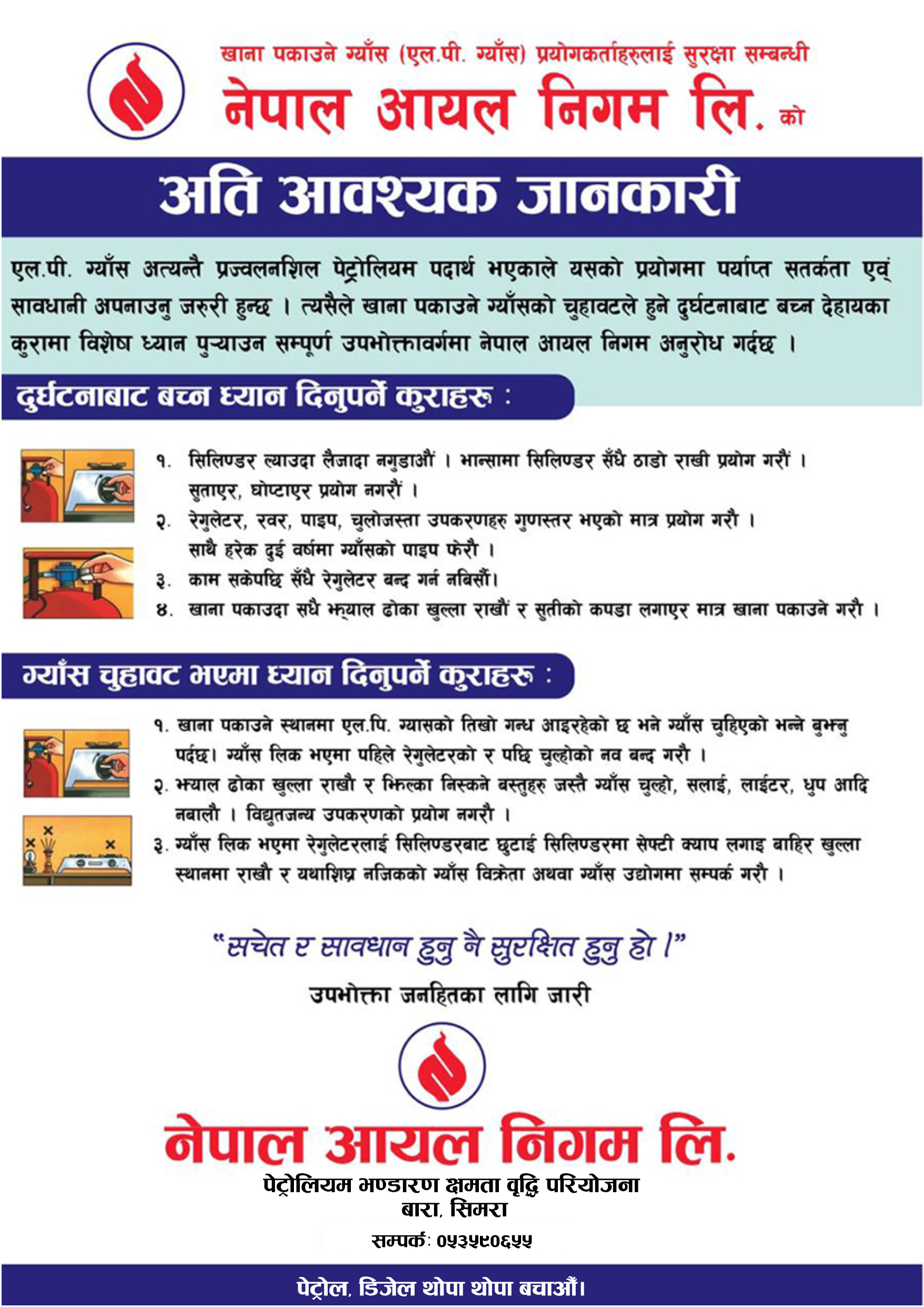UAE | Last year, Nepal imported over 70 million kilograms of soybeans worth more than 6 billion Nepali rupees, with the United States contributing the lion's share of approximately 3.5 billion rupees. Despite local cultivation spanning 22,000 to 28,000 hectares, domestic production remains insufficient to meet the growing demand driven by the poultry industry and urbanization. The presented statistics are only for soybean imports.
Import trends indicate a diversification of sources, with Nepal exploring options from countries like Brazil, Ukraine, and Canada. However, U.S. soybeans maintain dominance, comprising 50% of total imports last year, valued for their high protein content and sustainable farming practices.
In an exclusive interview at the “CrushCon 2024” seminar held in the UAE, U.S. Soybean Export Council (USSEC) leaders Lance Rezac and CEO Jim Sutter highlighted the sustainability and superior quality of American soybeans. Kevin Roepke, the Council’s South Asia Regional Director, elaborated on the market potential in South Asia, underscoring efforts to expand American soybean outreach in the region.
This story delves into why U.S. soybeans are gaining traction, their role in food security, and Nepal's strategic shift in sourcing to meet its escalating demand.
Chairmen, Lance Rezac, With climate change affecting agriculture globally, how are U.S. Soy farmers adapting growing practices to ensure consistent and resilient soybean production?
While sustainability has become widely popular today, U.S. Soy farmers have been implementing sustainable practices since the 1980s. On U.S. soybean farms we use a variety of practices to help reduce our carbon footprint.
For example, we practice crop rotation, especially with nitrogen-fixing legumes like soybeans. This helps enrich the soil without excessive nitrogen fertilizers, reducing downstream pollution and improving crop resilience. Another important tool we use is GPS technology. It aids us in improving efficiency, minimizes chemical drift, runoff, and reduces fuel use.
We also plant cover crops to prevent erosion, improve water retention, and add organic matter to the soil. Planting techniques such as no-till and strip-till also help protect soil structure, reduce erosion, and increase water infiltration.
On our U.S. soybean farms we are always focused on producing more using fewer resources. For example, precision variable rate technologies allow us to apply pesticide to targeted areas, only where it’s needed. This helps preserve farm biodiversity and promotes pollinators, a key to long-term crop productivity.
By embracing these and other sustainable practices, we avoid soil disturbance and strengthen soil health.
Are there specific initiatives directed toward sustainability?
Through collaboration with the supply chain such agribusiness, tech companies, and governments, U.S. Soy is able to expand its adoption of sustainable farming practices.
Well known programs from the USDA, NRCS and other U.S. government agencies encourage farmers to adopt sustainability initiatives. Additionally, USDA introduced the Inflation Reduction Act that provides $19.5 billion over five years to support USDA’s conservation programs mitigate climate change.
Other initiatives such as the Partnerships for Climate Smart Commodities offer technical and financial support for producers who want to adopt voluntary climate-smart practices, pilot new methods for measuring greenhouse gas benefits, and develop markets for climate-smart commodities.
This collective effort helps and promotes the adoption of sustainable practices.
CEO Jim Sutter, What unique qualities or advantages do U.S. soybeans offer compared to those from other regions?
The advantages of U.S. Soy include its nutrient bundle along with the consistency, reliability, and sustainability of U.S. soybean production. We’ve been monitoring quality data for more than 10 years and have seen lower damage and higher digestibility of calories and essential amino acids of U.S. Soy over soy of other origins. This year, we have focused on quantifying the value U.S. Soy brings to animal and aquaculture production, including the following benefits: Substantially lower feed costs, Higher animal performance and uniformity, Higher overall business profitability, and Lower carbon footprint.

We are seeing that the value being unlocked for medium to large animal producers can be in millions of dollars. We’re partnering with internal and external stakeholders to better help capture this value, including: Partnering with animal and aquaculture producers to better understand the value unlocked from using U.S. Soy in feed formulations over soy of other origins and Investing in supplemental research to quantify the value and benefits in animal performance and health unlocked in real-world scenarios.
What role do U.S. soybeans play in supporting food security and nutrition initiatives in South Asia?
U.S. Soybeans are an essential part of the world’s food system. In the South Asia region, U.S. Soy is primarily used in poultry feed. The high protein content in U.S. Soy helps in optimizing production and improving animal performance. U.S. Soy delivers a sustainable and reliable solution to South Asia’s growing demand for protein.
Another initiative that USSEC has been running in South Asia is the Right to Protein campaign. This public awareness campaign aims to highlight the importance of consuming adequate protein for overall well-being. A key signature event under this has been our Right to Protein Run held in Nepal every year.
Today, we witnessed Nepal’s first company Valley Group, be recognized for their adoption of the ‘Fed with Sustainable US Soy’ label. Can you talk more about the significance of this label and why other companies in Nepal should follow Valley Group’s example?
The ‘Fed with Sustainable U.S. Soy’ label helps customers differentiate products in a competitive market. By using the label, brands are able to demonstrate their commitment towards sustainability. As customers' preferences evolve, they want to know more about the source of their food. This is where the ‘Fed with Sustainable U.S. Soy’ label helps brands build trust with their customers.
We have had a lot of success in the region with Sri Lanka leading with the highest number of ‘Fed with Sustainable U.S. Soy’ label users and we are excited to welcome Valley Group. I hope that more U.S. Soy customers will also follow Valley Group’s example because striving towards sustainability is striving towards a better tomorrow.
Are there specific educational or training programs offered by USSEC to help South Asian buyers understand U.S. soybean products and their uses?
Knowledge sharing and capacity-building are core pillars of USSEC’s mission and we regularly conduct trainings globally. One of our initiatives, the Soy Excellence Center (SEC), is specially geared towards upskilling and capacity-building. With the world’s population rapidly growing, we are challenged with keeping up with rising demand for food and we see the SEC as part of the solution.
The SEC’s aim is to empower the next generation of protein professionals with the skills needed to meet this rising demand sustainably. The SECs are also intentionally located in emerging markets like South Asia where populations are increasing significantly. SECs offer courses across various learning tracks including poultry, feedmilling, swine, and aquaculture.
Since we started our SEC in South Asia, we have seen growing interest from the industry and have successfully trained 800+ graduates. What makes the SECs unique is the global curriculum and its exclusive online community. By targeting early-to-mid career professionals, we aim to build the protein leaders of tomorrow.
Mr.Kevin Roepke, Could you describe the scale and scope of U.S. soybean exports to South Asia? What are some recent trends in trade between the U.S. and South Asia in this sector?
We see tremendous potential in South Asia and are excited to partner with one of the fastest-growing regions in the world. U.S. Soy is ready to meet South Asia’s growing demand for protein as the population continues to increase. While the poultry industry remains the driver of demand for U.S. Soy in the region, we are also seeing exciting market expansion in other sectors.
This has been an eventful year for us, with significant milestones and a positive trend in U.S. Soy sales across South Asia.
For example,
India has recently imported 30,000 MT of U.S. soybean oil, demonstrating the market’s strong preference for US quality.
In Pakistan, after a two-year pause on imports, we are seeing progress toward the resumption of trade of genetically modified (GM) U.S. soybeans. Prior to the pause, Pakistan has imported as much as $600 million in US soybeans. If trade resumes, we are optimistic that the cost of raw ingredients —mainly soy—used in poultry feed will decrease, making chicken more affordable for Pakistanis.
In Nepal, we recently signed the country’s first ever licensing agreement for sustainable US soy. The shows the country’s changing consumer demands and growing appetite for more environmentally conscience production practices.
Bangladesh—South Asia’s largest importer of whole soybeans—increased their year-over-year imports of US origin by over 150%.
Sri Lanka takes the spot as the largest U.S. Soybean meal importer at over $100 million—up roughly 20% year over year.
These positive developments demonstrate the region’s growing trust in U.S. Soy. Through trade, we have the power to help the region meet its food and nutrition security goals.
Given Nepal's growing demand for soy-based products, especially in the poultry and livestock sectors, how does USSEC support Nepalese businesses in accessing high-quality U.S. soybean products?
One of our foundational functions at USSEC is spreading knowledge about the role that high-quality raw materials, such as U.S. Soy, play in the overall nutritional bundle. USSEC works with the industry in creating channels to provide information, connecting industry leaders with the U.S. Soy farmers and fostering those relationships.
Every year we also take a trade team of key decision-makers from Nepal to visit U.S. Soybean farms in person and experience U.S. agriculture firsthand. This immersive experience provides an opportunity to meet the farmers and understand the source of their food. We also have a team of on-the-ground experts in each country that we operate in. They have deep insights into the unique needs of the region.



